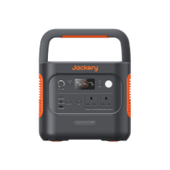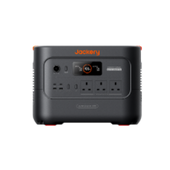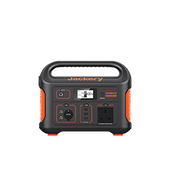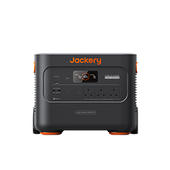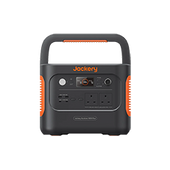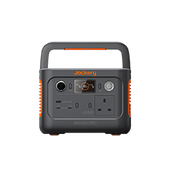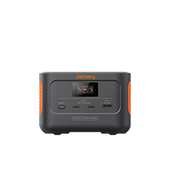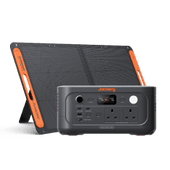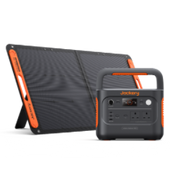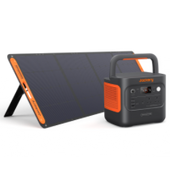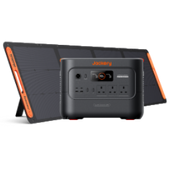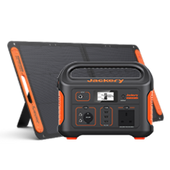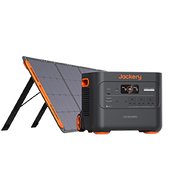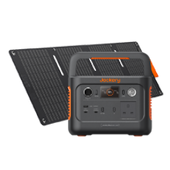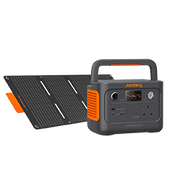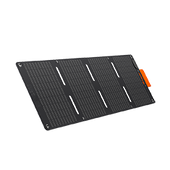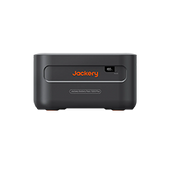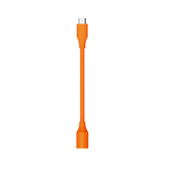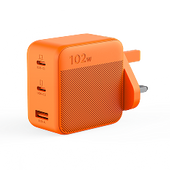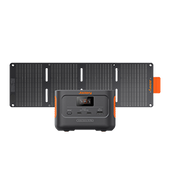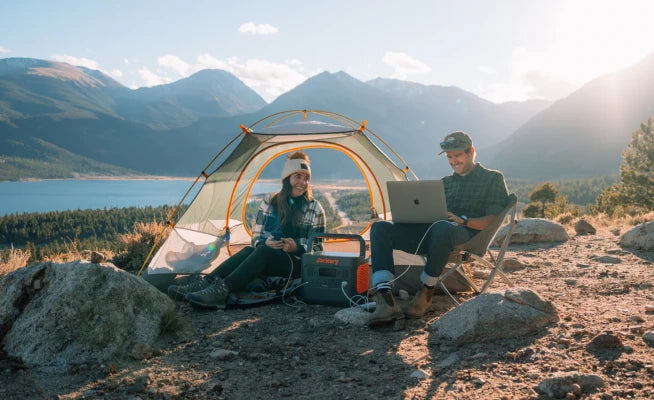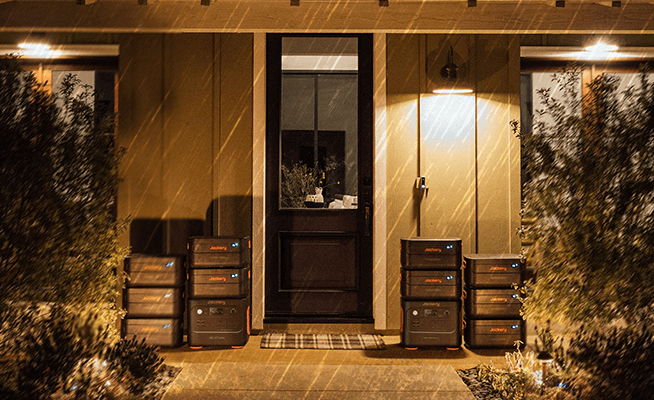Electric biking has exploded across the UK in recent years — from city commuting to epic countryside adventures. Whether you're an eco-conscious urban rider or a weekend explorer hitting rugged trails, e-bikes offer freedom, speed, and a whole new way to experience the outdoors.
But as electric biking (electric bike riding) becomes more serious and ambitious, one crucial question arises: how do you keep your bike charged on the go?
This is where a portable power station in the UK becomes an essential companion. Especially if you're planning a longer biking tour, camping outdoors, or simply want to avoid range anxiety, having the right backup power is key.
Understanding E-Bike Batteries and Motors
In electric bikes, battery capacity is measured in watt-hours (Wh) or ampere-hours (Ah).
· Watt-hours (Wh) = Total energy stored in the battery.
· Ampere-hours (Ah) = Current flow over time at a given voltage.
Formula to Convert: Wh=V*Ah
Example: A 48V 12.5Ah battery = 600Wh total capacity.
Why it matters: A higher Wh rating translates directly into longer ride distances. Understanding your battery’s capacity is the foundation for planning any serious electric biking expeditions.
Motor Power Basics
Motor ratings (in watts) define how much mechanical power your e-bike can produce.
· Continuous power: What the motor sustains (UK limit: 250W).
· Peak power: Short-term bursts useful for climbs or acceleration.
Higher motor ratings mean more robust climbing ability and better acceleration but consume more battery power — critical for planning long bike trips.
Typical Range Estimates
Let's use a realistic example:
· Example E-bike: 600Wh battery, 250W motor
· Estimated Range: 45–70 km per full charge under mixed conditions.
Variables such as rider weight, terrain, and riding style will cause variations of up to 30%.
Thus, to ensure reliable performance over multi-day tours, a deeper understanding of these basics is vital.
How to Calculate the Required Power Station Capacity
Selecting the right portable power station is simple, with a few key calculations.
Formula 1: Estimating Ride Time
RideTime(hours)=Battery Capacity (Wh) /Average Consumption (W)
Example: 600Wh battery / 250W motor = 2.4 hours of sustained riding.
Remember, real-world consumption often fluctuates. Many riders consume 60%-80% of the rated motor power during normal operation.
Formula 2: Estimating Required Power Station Capacity
Required Station Capacity(Wh)=Battery Capacity(Wh)×1.2
(Adding ~20% buffer for inverter and conversion losses)
Example: 600Wh × 1.2 = 720Wh needed.
Thus, if you need to fully recharge your e-bike once, your portable power station should have a usable capacity of at least 720Wh.
For longer trips involving multiple recharges, scaling up your power station becomes essential.
Practical Scenario
If you're planning a weekend biking tour covering 150km total, and assuming your E-bike consumes 600Wh per 60km in an ideal world (at a top speed of 25 km/h in the UK):
· You would need approximately 1.5x full charges to complete your route without access to external power.
This level of detail ensures you pick a power solar generator that matches your adventure goals.

Copyright image from https://www.freepik.com/free-photo/sideways-cyclist-standing-e-bike_4982387.htm
Factors Affecting Your Power Needs
While theoretical calculations give you a starting point, real-world riding conditions often differ — sometimes dramatically. Understanding these factors will help you plan more precisely and avoid unexpected power shortages.
Terrain
The nature of the terrain has one of the most significant impacts on battery consumption:
· Flat surfaces are energy-friendly. Riding on paved, flat roads allows your e-bike motor to operate efficiently, maximizing your distance per charge. Expect to get closer to the maximum estimated range under these conditions.
· Mountainous and hilly terrains demand much more from your motor. Frequent climbs, sharp inclines, and uneven surfaces can drastically increase power draw, cutting your effective range by as much as 30–50%.
· Mixed terrain conditions, such as countryside trails combining hills, dirt paths, and gravel, create variable loads on your motor, leading to inconsistent battery usage that requires extra energy reserves.
Pro Tip: Always factor in an extra 20–30% buffer energy when tackling mountainous routes to avoid running out of power mid-climb.
Rider Weight and Load
The more weight your e-bike carries, the harder your motor must work, directly increasing energy consumption:
· A solo rider with minimal gear typically falls within standard range estimates.
· Carrying camping gear, a trailer, or fully loaded panniers can add 10–30kg or more, drastically altering your power needs.
· Group rides where riders share gear loads can mitigate individual battery strain, but solo riders on expeditions must plan accordingly.
Real-world example: On a loaded tour with about 25kg of additional cargo, riders often report needing 10–20% more battery capacity compared to unladen rides.
Wind and Weather
Weather conditions, particularly wind and temperature, also influence e-bike performance:
· Headwinds can increase motor load substantially. Battling strong winds can cause your battery to drain up to 20% faster than under calm conditions.
· Tailwinds, on the other hand, may slightly reduce power usage.
· Cold weather impacts battery chemistry, making batteries less efficient. In temperatures near freezing, you can experience a 10–20% shorter range.
· Rain and wet conditions add rolling resistance, slightly increasing energy consumption, though to a lesser extent than hills or wind.
Pro Tip: Pre-condition your battery (start with a warm battery) in cold weather to preserve its effective capacity.
Riding Mode
Most modern e-bikes offer multiple riding modes that influence how much electrical assistance is provided:
· Eco Mode: Prioritizes minimal motor assistance, extending battery life and enabling the longest rides.
· Normal or Tour Modes: Offer balanced assist, ideal for standard leisure or commuting scenarios.
· Sport or Turbo Modes: Deliver maximum assist for speed and hill climbing but significantly reduce range.
Frequent use of Turbo mode can slash your effective distance by up to 40% compared to Eco mode.
Pro Tip: On longer bike trips, use a hybrid strategy: engage Eco or Tour modes for most of the ride, reserving Turbo mode for steep hills or difficult sections.
Additional Considerations
· Tyre pressure: Underinflated tyres cause more rolling resistance and higher energy usage. Keep tyres inflated to recommended pressures.
· Maintenance: A well-lubricated chain and properly tuned drivetrain reduce friction, helping maximize battery efficiency.
· Braking habits: Excessive braking followed by hard acceleration uses more battery; smooth riding conserves energy.
Understanding and adapting to these variables will significantly improve your electric biking experience, letting you better estimate your needs when selecting a portable power station UK setup or planning your next bike trips with a solar power generator backup.

Factors to Consider When Choosing a Power Station
Before diving into specific product recommendations, it’s important to understand the key factors that should guide your choice of a portable power station for electric biking tours:
1. Weight and Portability
When you're carrying everything on your e-bike, weight matters.
Look for a power station that strikes a balance between sufficient capacity and easy portability. Lightweight models are ideal for shorter trips or city riding, while larger, heavier units are better suited for car-supported or basecamp adventures.
Pro Tip: Make sure the power station fits into your panniers, trailer, or backpack without exceeding your load limits.
2. Output Ports
A versatile power station should offer multiple output options, such as:
· AC outlets (for standard chargers)
· USB-A and USB-C ports (for phones, GPS, lights)
· DC outputs (for direct charging of some e-bike batteries)
Having a variety of ports ensures you can charge not only your bike but also essential gear during your journey.
3. Charging Time
Fast recharging capability can be a game-changer, especially on multi-day tours.
Look for models that support rapid input charging so you can top up your power station during lunch breaks or overnight stops.
4. Additional Features like Solar Panels
Some portable power stations offer seamless integration with solar panels. Choosing a model that supports solar charging greatly enhances your energy independence and extends your touring range indefinitely.
Solar panels allow you to harness free, renewable energy during downtime — perfect for remote trails, campsites, or wilderness adventures.

Jackery Power Station Recommendations for E-Bike Riders
Choosing the right portable power station can make the difference between a seamless electric biking experience and an exhausting one. Based on different types of riders and trip lengths, here are two excellent Jackery solutions tailored for electric biking adventures:
1. Jackery Explorer 300 Plus Portable Power Station
For riders who primarily use their e-bikes for daily commuting, short weekend trips, or city explorations, the Jackery Explorer 300 Plus Portable Power Station is an outstanding option.
Weighing only 3.75kg, this ultra-portable station offers a 288Wh capacity and a 300W rated output (with 600W surge capacity), making it ideal for topping off smaller e-bike batteries or providing an emergency backup charge mid-ride.
Its compact size means it fits easily into a pannier bag or even a large backpack, ensuring you can carry it without feeling weighed down. While it may not fully recharge a large-capacity e-bike battery from empty to full, it is more than capable of keeping you powered through unexpected detours, extended commutes, or spontaneous weekend adventures around the city.
If lightweight convenience and flexibility are your top priorities, the Explorer 300 Plus delivers outstanding performance without compromise.
2. Jackery Solar Generator 1000 v2
For more ambitious riders planning multi-day tours, remote trail expeditions, or camping trips with multiple e-bikes, the Jackery Explorer 1000 V2 Portable Power Station combined with two SolarSaga 100W panels offers an exceptional solution.
With a massive 1070Wh capacity and a 1500W rated output (3000W surge), this setup can fully recharge a typical e-bike battery at least once — sometimes even twice — depending on battery size and riding conditions.
Beyond its pure power, what truly sets this system apart is its ability to be recharged off-grid using solar energy. In around 7.5 hours of good sunlight, the SolarSaga 100W panels can replenish the Explorer 1000 V2, enabling riders to maintain mobility day after day, even deep in the wilderness without access to mains electricity.
This setup also supports simultaneous charging of other critical gear such as smartphones, GPS units, lights, and camping equipment — making it the ideal hub for outdoor adventurers who refuse to compromise on energy independence.
Whether you're crossing rugged national parks or setting up basecamp for extended stays, the Explorer 1000 V2 and SolarSaga combination ensures you stay connected, mobile, and powered throughout your journey.
UK E-Bike Law Update in 2025
As of 2025, the UK continues to regulate e-bikes under the EAPC framework. Here's what you must know:
Compliance Requirements
· Maximum continuous rated motor power: 250W
· Maximum speed without pedalling: 15.5 mph (25 km/h)
· Pedals must be operational
No Registration, Tax, or Insurance Required
If your e-bike meets EAPC standards, you can ride freely on:
· Public roads
· Cycle paths
However:
· Riding on pavements (sidewalks) is illegal unless explicitly allowed.
Consequences of Non-Compliance
If your e-bike exceeds legal thresholds:
· It is classified as a motor vehicle.
· Requires licensing, registration, and insurance.
· Riders must wear approved motorcycle helmets.
· MSVA (Motorcycle Single Vehicle Approval) testing is mandatory.
Understanding these regulations is critical when planning your bike trips to avoid penalties and ensure legal riding.

Tips for Planning Your Electric Biking Trips
Carefully planning your adventure can boost enjoyment and safety.
1. Use Cycle Map Apps
Recommended apps for electric biking include:
· Komoot: Specialized in outdoor, e-bike-optimized trails.
· RidewithGPS: Offers power consumption estimation tools.
· OS Maps: UK’s authoritative mapping system, now with e-bike overlays.
2. Estimate Power Needs Based on Your Route
Map your full route and note:
· Total distance
· Elevation gain
· Expected consumption based on load and terrain
Prepare extra charging capacity if elevation gain is high or riding conditions are challenging.
3. Charging Strategies
· Plan for recharges every 50 km (20% of capacity remained).
· Use solar charging when stationary during lunch breaks or overnight camping.
· Carry a fast charger where applicable to maximize short recharge windows.
Combining portable stations and solar panels ensures your e-bike remains ready for action at all times.
Conclusion
For electric biking enthusiasts, a reliable portable power station isn’t just a convenience — it’s a key to unlocking longer, freer, and more adventurous rides.
Whether you’re exploring quiet countryside lanes, tackling rugged trails, or setting out on a multi-day journey, having dependable backup power means you can ride further, worry less, and truly enjoy the experience.


